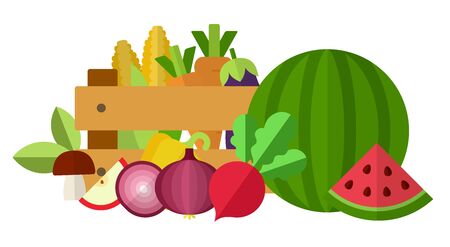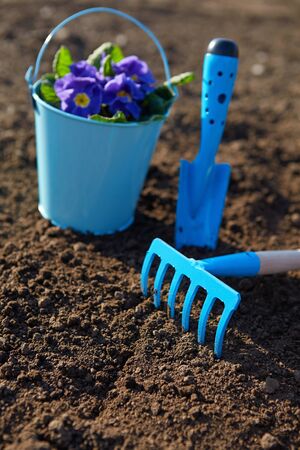Understanding USDA Hardiness Zones
If youre planning a vegetable garden, one of the first and most important steps is knowing your USDA Hardiness Zone. This zone tells you what plants are most likely to thrive in your area based on average annual minimum winter temperatures. By understanding your zone, you can choose vegetables that grow best in your local climate and know exactly when to plant them each season.
What Are USDA Hardiness Zones?
The United States Department of Agriculture (USDA) created the Hardiness Zone Map to help gardeners determine which plants are most suitable for their region. The map divides the country into 13 zones, ranging from Zone 1 (coldest) to Zone 13 (warmest). Each zone represents a 10°F difference in average annual minimum temperature.
Why This Matters for Vegetable Gardening
Vegetables have specific temperature needs. Some love the cool spring weather, while others need the heat of summer to thrive. Planting at the wrong time can lead to poor growth or crop failure. Knowing your USDA Zone helps you understand when its safe to plant cold-sensitive crops like tomatoes or when to sow cool-season veggies like lettuce and spinach.
How to Find Your USDA Hardiness Zone
Its easy to find your zone using the USDAs interactive map online. Just enter your ZIP code, and it will show your exact zone. You can also refer to the simplified table below for an overview:
| Zone | Average Minimum Temperature (°F) | Example Locations |
|---|---|---|
| 3 | -40 to -30°F | Northern Minnesota, North Dakota |
| 5 | -20 to -10°F | Nebraska, Illinois |
| 7 | 0 to 10°F | Tennessee, Oklahoma |
| 9 | 20 to 30°F | Florida, Southern Texas |
Using Your Zone for Seasonal Planning
Once you know your hardiness zone, you can use planting calendars tailored specifically for your area. These guides tell you the best months to start seeds indoors, transplant seedlings outside, and harvest crops. Matching your planting schedule with your zone increases the chances of a healthy and productive garden.
2. Spring Planting: Cool-Season Crops to Start the Year
As winter fades and the soil begins to warm, early spring is the perfect time to get your garden started with cool-season crops. These vegetables thrive in cooler temperatures and can handle light frosts, making them ideal for planting before summer heat sets in. Depending on your USDA hardiness zone, many of these crops can be planted as early as February or March.
Best Cool-Season Vegetables for Early Spring
Cool-season vegetables grow best when daytime temperatures range from 40°F to 75°F. They prefer moist, well-drained soil and consistent watering to support healthy growth. Here are some top picks for early spring planting:
| Vegetable | Ideal Planting Time | USDA Zones | Growing Tips |
|---|---|---|---|
| Spinach | 4-6 weeks before last frost | 3-9 | Sow directly into soil; tolerates light frost |
| Lettuce (leaf, romaine) | 4-6 weeks before last frost | 4-9 | Prefers cool temps; harvest outer leaves often |
| Peas (snap, snow, shelling) | As soon as soil is workable | 3-8 | Use a trellis; plant in full sun |
| Radishes | 4-6 weeks before last frost | 3-10 | Matures quickly; thin seedlings for best growth |
| Carrots | 2-4 weeks before last frost | 3-10 | Sow directly; keep soil consistently moist |
| Kale | 4-6 weeks before last frost | 4-9 | Tolerates cold well; sweeter after a light frost |
| Bok Choy (Pak Choi) | 4 weeks before last frost | 5-9 | Sow directly or transplant; partial shade okay |
| Beets | 2-4 weeks before last frost | 3-10 | Sow seeds 1 inch apart; harvest greens too! |
| Cabbage (early varieties) | 6 weeks before last frost indoors; transplant later | 4-9 | Loves rich soil; space plants for full heads to form |
| Swiss Chard | 2-4 weeks before last frost | 3-10 | Tolerates both cold and heat; cut outer leaves to harvest continuously |
Tips for Successful Spring Planting Across Regions
Northern States (Zones 3–5):
You may need to start seeds indoors or use row covers to protect young plants from late frosts. Focus on hardy greens like kale and spinach.
Midwestern and Northeastern States (Zones 5–7):
This region offers a good window for direct sowing in March or April. Root vegetables like carrots and beets do especially well here.
Southeastern and Southern States (Zones 7–10):
Your growing season starts earlier—January or February in some areas. Choose bolt-resistant varieties of lettuce and spinach since warmer temps arrive quickly.
Western States and Coastal Areas:
Mild winters mean an extended cool-season crop window. Succession planting every few weeks can provide a continuous harvest.
Create Your Own Spring Garden Plan Based on Zone & Timing:
| Your Zone Range (USDA) | Suggested Start Date for Cool Crops* |
|---|---|
| Zones 3–5 (Northern U.S.) | Late March – Mid April |
| Zones 6–7 (Mid U.S.) | Early March – Early April |
| Zones 8–10 (Southern U.S.) | Late January – Late February |
*Always check local frost dates for the most accurate timing in your area.
A successful spring garden begins with understanding your region’s climate and choosing the right crops for the season. With these cool-season vegetables, youll get a jump start on your harvest while enjoying fresh, homegrown produce early in the year.

3. Summer Planting: Warm-Season Favorites
Summer is the peak season for growing heat-loving vegetables that thrive in long, sunny days and warm soil. If youre looking to fill your garden with juicy tomatoes, crisp peppers, and hearty squash, summer planting is your time to shine. The key is knowing when to start seeds indoors or transplant seedlings outside, depending on your USDA Hardiness Zone.
Top Warm-Season Vegetables
Here are some of the most popular vegetables that do well in summer:
- Tomatoes: Require full sun and consistent watering. Great for salads, sauces, and sandwiches.
- Peppers: From sweet bell peppers to spicy jalapeños, they love the heat and need plenty of sunlight.
- Squash: Both summer squash (like zucchini) and winter squash (like butternut) grow best in warm soil.
- Cucumbers: Fast-growing vines that love hot weather. Great for pickling or fresh eating.
- Eggplant: Needs a long, warm growing season and performs best in raised beds or containers with rich soil.
When to Plant by Region
The ideal planting time can vary based on your USDA Hardiness Zone. Heres a quick guide to help you get started:
| USDA Zone | Start Seeds Indoors | Transplant Outdoors |
|---|---|---|
| Zone 3-4 (Northern US) | Late March – April | Late May – Early June |
| Zone 5-6 (Midwest/Northeast) | March – Early April | Mid-May |
| Zone 7-8 (Mid-South/Lower Midwest) | February – March | April – Early May |
| Zone 9-10 (South/Coastal West) | January – February | March – April |
Tips for Success
- Harden off your seedlings: Before transplanting outdoors, gradually expose them to outdoor conditions over a week.
- Avoid cold snaps: Wait until after your last expected frost date before putting plants in the ground.
- Add mulch: Mulching helps retain moisture and suppress weeds during hot summer months.
- Water deeply: Summer crops need regular, deep watering—especially during dry spells.
4. Fall Gardening: Extend the Harvest
As summer winds down, fall presents a perfect opportunity to keep your garden growing. With cooler temperatures and fewer pests, many vegetables actually thrive in autumn. Plus, fall gardening lets you enjoy fresh produce even as the days get shorter.
Why Plant in the Fall?
Falls mild weather is ideal for many cool-season crops. The soil is still warm from summer, which helps seeds germinate faster, and cooler air temperatures reduce stress on young plants. Many fall vegetables also become sweeter after a light frost—especially carrots and kale.
Top Vegetables to Grow in Fall
The following crops are well-suited for fall planting across most U.S. regions:
| Vegetable | Ideal Planting Time (by USDA Zone) | Notes |
|---|---|---|
| Kale | Zones 3–9: Mid to late summer | Tolerates frost; flavor improves with cold |
| Broccoli | Zones 3–9: Late summer | Prefers consistent moisture; protect from early frost in colder zones |
| Carrots | Zones 3–10: Late summer to early fall | Sow directly into soil; mulch to retain moisture |
| Spinach | Zones 4–9: Late summer to early fall | Tolerates cold; may overwinter in mild climates |
| Lettuce | Zones 4–9: Early fall | Matures quickly; choose heat-tolerant varieties if planting early |
| Radishes | Zones 3–10: Early to mid-fall | Matures fast—ready to harvest in 3–5 weeks |
Tips for Successful Fall Gardening
Create a Planting Schedule Based on Your Region
Your local first frost date determines when you should plant fall crops. Count backwards from that date based on each vegetable’s maturity time. For example, if your first frost is around October 15 and your carrot variety takes 70 days to mature, plant no later than early August.
Select the Right Varieties
Certain varieties are bred specifically for cooler weather. Look for terms like “cold-hardy,” “early maturing,” or “fall crop” on seed packets.
Make the Most of Shorter Days
Crops grow slower as daylight decreases, so give them a head start by planting while days are still long. You can also use row covers or cold frames to capture warmth and extend the growing season further.
Add Compost Before Planting
Nutrient-rich soil gives fall crops a strong start. Refresh your beds with compost or organic fertilizer before seeding or transplanting.
Irrigate Carefully
The weather may be cooler, but young seedlings still need consistent moisture. Water deeply but less frequently as the season progresses and rain increases.
A Quick Reference by USDA Hardiness Zone:
| USDA Zone | Sow Cool-Season Crops By… |
|---|---|
| Zone 3–4 | Mid-July to Early August |
| Zone 5–6 | Late July to Mid-August |
| Zone 7–8 | Mid-August to Early September |
| Zone 9–10 | September to October (can grow through winter) |
This way, you can continue enjoying homegrown vegetables well into the chilly months and make every season count in your garden.
5. Winter Growing Strategies and Indoor Options
Just because its winter doesnt mean you have to stop growing your own food. With the right tools and techniques, you can continue to enjoy fresh vegetables and herbs even during the coldest months. Here are some practical ways to grow during winter, whether youre working with outdoor space or a sunny windowsill indoors.
Using Cold Frames for Outdoor Winter Gardening
Cold frames are like mini greenhouses that help trap heat from the sun, creating a microclimate that’s warmer than the outside air. They’re perfect for hardy greens like spinach, kale, and lettuce.
Best Vegetables for Cold Frames
| Vegetable | Ideal Temperature Range (°F) | Notes |
|---|---|---|
| Spinach | 20–75 | Tolerates frost well; grows slowly in low light. |
| Kale | 15–70 | Sweeter after frost; ideal for cold frames. |
| Lettuce (Romaine, Butterhead) | 30–70 | Choose cold-hardy varieties for best results. |
| Mâche (Corn Salad) | 20–65 | A European favorite; thrives in winter conditions. |
Greenhouse Gardening All Year Long
If you have access to a greenhouse—whether it’s a full-sized structure or a small backyard model—you can grow a wider variety of crops year-round. In winter, greenhouses help keep temperatures stable and protect plants from snow and wind.
Winter-Friendly Crops for Greenhouses
- Carrots – Sow in deep containers or raised beds inside the greenhouse.
- Swiss Chard – Tolerates cool temps and provides continuous harvests.
- Beets – Enjoy both roots and leafy tops throughout the season.
- Bok Choy – Grows quickly and loves cooler temperatures.
Indoor Growing: Herbs & Microgreens on Your Windowsill
No garden? No problem! Many herbs and microgreens grow well indoors with just a little sunlight and water. These make great additions to your kitchen garden setup and are ideal for apartment dwellers or anyone limited on space.
Easy Indoor Crops to Grow in Winter
| Plant | Light Needs | Tips for Growing Indoors |
|---|---|---|
| Basil* | 6+ hours of sunlight or grow lights | Loves warmth; avoid drafts near windows. |
| Mint | Indirect light is sufficient | Keep soil moist; great for teas and cooking. |
| Cilantro | Bright light; cooler temps preferred | Sow seeds every few weeks for continuous harvest. |
| Microgreens (radish, broccoli, mustard) | 4–6 hours of light daily | Harvest within 10–14 days; use shallow trays with good drainage. |
*Note:
Basil prefers warmer environments and may need supplemental lighting during darker months.
No matter where you live in the U.S., there’s always a way to keep something growing—even in winter. Whether its using cold frames outside, tending to leafy greens in a greenhouse, or sprouting herbs on your kitchen counter, these strategies help keep your home stocked with fresh produce all year round.
6. Crop Rotation and Seasonal Planning Tips
To grow a productive and healthy vegetable garden year-round, its important to think ahead. Crop rotation and seasonal planning help you make the most of your space, improve soil health, and reduce pests and diseases. Let’s break down how you can plan smart for each growing season in your region.
Why Crop Rotation Matters
Certain vegetables take more nutrients from the soil than others, and some attract specific pests or diseases. By rotating crops—changing what you plant in each area every season—you give your soil time to recover and reduce the chances of problems building up.
Basic Crop Rotation Groups
You can group vegetables into four main categories for rotation purposes:
| Group | Examples |
|---|---|
| Leafy Greens | Lettuce, Spinach, Kale |
| Fruit-bearing Plants | Tomatoes, Peppers, Cucumbers |
| Root Vegetables | Carrots, Beets, Radishes |
| Legumes (Nitrogen Fixers) | Beans, Peas |
A simple rotation plan would be: Year 1 – Leafy Greens, Year 2 – Fruit-bearing Plants, Year 3 – Root Vegetables, Year 4 – Legumes, then repeat.
Seasonal Garden Planning by Region
Your planting schedule should follow your local climate. Here’s a quick overview of general timing by U.S. region:
| Region | Spring Crops | Summer Crops | Fall/Winter Crops |
|---|---|---|---|
| Northeast & Midwest | Lettuce, Peas, Broccoli | Tomatoes, Corn, Zucchini | Kale, Carrots, Garlic (plant in fall) |
| Southeast | Cabbage, Collards, Beets | Okra, Eggplant, Melons | Lettuce, Turnips, Spinach |
| Southwest & West Coast | Kale, Onions, Chard | Peppers, Cucumbers, Squash | Bok Choy, Beets, Mustard Greens |
| Pacific Northwest | Spinach, Arugula, Cabbage | TOMATOES*, Beans (*short-season varieties) | Kale, Brussels Sprouts, Leeks |
Sustainable Garden Planning Tips
- Create a garden map: Keep notes on where you plant each crop every season to easily rotate next year.
- Add compost regularly: Healthy soil is the foundation of a productive garden. Compost boosts nutrients naturally.
- Mimic nature: Mix in flowers and herbs to attract pollinators and beneficial insects.
- Use cover crops: In winter or between plantings, grow clover or rye to protect and enrich your soil.
- Plan for succession planting: As one crop finishes (like spring lettuce), have another ready (like summer beans) to keep beds full all year long.
A Little Planning Goes a Long Way!
If you take time to plan what you grow and when—and where—you’ll enjoy a healthier garden with less work over time. Rotate your crops each year and adjust your seasonal plan based on your region’s weather patterns for best results.


